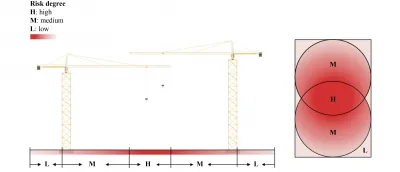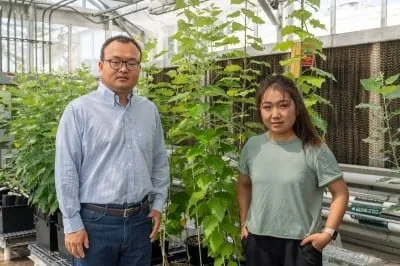
Revolutionary CRISPR Test Could Change the Game for Tuberculosis Screening!
2025-09-17
Author: Ming
A Hidden Epidemic: Tuberculosis's Silent Spread
Every year, over 10 million individuals are struck by tuberculosis (TB), yet a staggering 40% remain undiagnosed. Why? The answer lies in traditional sputum tests that many, especially asymptomatic patients, struggle to provide. In resource-limited areas, collecting sputum is often a daunting challenge.
Enter ActCRISPR-TB: The Future of TB Screening
Researchers at Tulane University have developed a groundbreaking CRISPR-based test called ActCRISPR-TB, poised to fill this diagnostic void. Imagine being tested for TB from a simple tongue swab! This innovative assay integrates isothermal amplification and CRISPR-Cas12a detection into a swift and easy one-pot reaction. In less than an hour, users receive results displayed on a paper strip, akin to a home COVID-19 test.
Proven Success: A Winning Formula Against Traditional Methods
In a study published in Nature Communications, ActCRISPR-TB showed remarkable efficacy, identifying TB in 74% of tongue swab samples compared to just 56% sensitivity from conventional methods. The performance soared even higher, achieving sensitivity rates of 93% for respiratory samples, 83% for pediatric stool, and 93% for adult spinal fluid, showcasing its potential in diagnosing TB where sputum collection fails.
Accessibility is Key: Bringing Diagnostics to the Underserved
Dr. Zhen Huang, the lead researcher, emphasizes the necessity of point-of-care technologies for TB, a disease often linked to poverty. Most cases are found in remote areas with limited healthcare resources. "To enhance accessibility to TB diagnostics, we must innovate," Huang stated.
Closing the Gaping Sputum Gap
Traditional TB diagnostics hinge on sputum, yet this is unattainable for about 25% of symptomatic patients and nearly 90% of asymptomatic ones. The reliance on sputum has left millions undiagnosed, enabling TB to spread unchecked. ActCRISPR-TB’s focus on easily collected oral samples could facilitate large-scale screening in under-resourced communities.
Innovative Design and Sensitivity Boosts
This new technology builds on previous advancements by the team, known for their two-step CRISPR assays that detected Mycobacterium tuberculosis cell-free DNA in blood. ActCRISPR-TB streamlines the process further, cutting contamination risks and needing fewer materials. It has been validated using over 600 clinical specimens across diverse sample types.
Future Possibilities: Beyond Tuberculosis
Dr. Huang and his team are looking to expand this technology. "We see the potential for integrating AI into our system. With AI’s assistance, we could create more effective screening methods for various pathogens, not just TB,” he noted, hinting at application possibilities for urgent illnesses like COVID-19 and monkeypox.
Challenges Ahead: Overcoming Hurdles with Innovation
While the initial results are promising, broader community-based studies are crucial to verify effectiveness in real-world scenarios, particularly for asymptomatic individuals with lower bacterial loads. Some challenges remain: in the trial, 26% of TB cases positively identified by sputum testing returned negative results via tongue swab. Variability in DNA levels and sampling techniques could complicate clinical applications, but insights from COVID-19 testing may offer valuable solutions.
A Path Forward: Ending Tuberculosis's Grip on Society
By eliminating the reliance on sputum and reducing the need for costly equipment, ActCRISPR-TB presents a vital opportunity for earlier TB detection and treatment—essential steps towards the global objective of eradicating this silent epidemic.





 Brasil (PT)
Brasil (PT)
 Canada (EN)
Canada (EN)
 Chile (ES)
Chile (ES)
 Česko (CS)
Česko (CS)
 대한민국 (KO)
대한민국 (KO)
 España (ES)
España (ES)
 France (FR)
France (FR)
 Hong Kong (EN)
Hong Kong (EN)
 Italia (IT)
Italia (IT)
 日本 (JA)
日本 (JA)
 Magyarország (HU)
Magyarország (HU)
 Norge (NO)
Norge (NO)
 Polska (PL)
Polska (PL)
 Schweiz (DE)
Schweiz (DE)
 Singapore (EN)
Singapore (EN)
 Sverige (SV)
Sverige (SV)
 Suomi (FI)
Suomi (FI)
 Türkiye (TR)
Türkiye (TR)
 الإمارات العربية المتحدة (AR)
الإمارات العربية المتحدة (AR)